5 Surprising Benefits of Ghee, Your New Favorite Pantry Staple
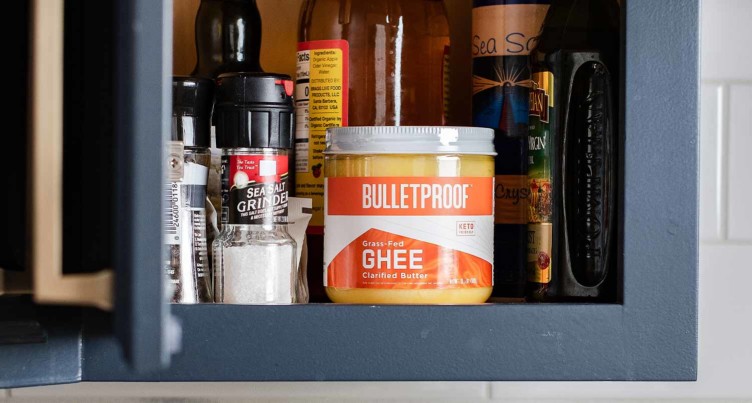
- In a lot of ways, ghee is better than butter — it’s more versatile, lasts longer and (some say) it even has a superior taste.
- Due to its high smoke point, ghee won’t burn as quickly as butter, which may help to reduce the risk of negative effects of lipid oxidation.
- Ghee has other perks: It can be stored in the cupboard (not the fridge), and it can replace less tasty oils and fats in all your favorite recipes.
Ghee is basically butter, but — stay with us here — it may be a little bit better. It has a high smoke point. It tastes richer and more complex. You can also use it in everything from baked goods and high-heat cooking to Bulletproof coffee and everything in between.
This staple of Indian households has been used in cooking and Ayurvedic medicine for thousands of years. Here’s what you should know about the benefits of ghee and how it stacks up against other cooking fats.
The big benefits of ghee
Ghee is butter that’s heated until the milk solids separate. Continued cooking makes the milk solids caramelize, making the butterfat take on a rich, almost nutty flavor. Most of the milk solids are then strained out, leaving you with a golden oil with big benefits that can be used for everything from baking cakes to deep frying. Here’s why:
1. High smoke point

Ghee can be used in cooking at temperatures up to 485°F so you can fry, saute or grill with less concern about the fats burning.
You don’t want to cook with fat that has been heated past its smoke point. First of all, it tastes gross and adds a bitter, charred flavor to your food. Second, burning your cooking fat isn’t healthy. The breakdown of the fat’s chemical structure exposes you to harmful free radicals.
When fats burn, the lipids oxidize, which means the chemical bonds are broken. This starts a chain reaction, generating cell-damaging free radicals and advanced lipid oxidation end products, or ALEs. When eaten, ALEs go from your gut to the circulatory system, where studies show they induce inflammation throughout the body.[1]
2. Shelf-stable
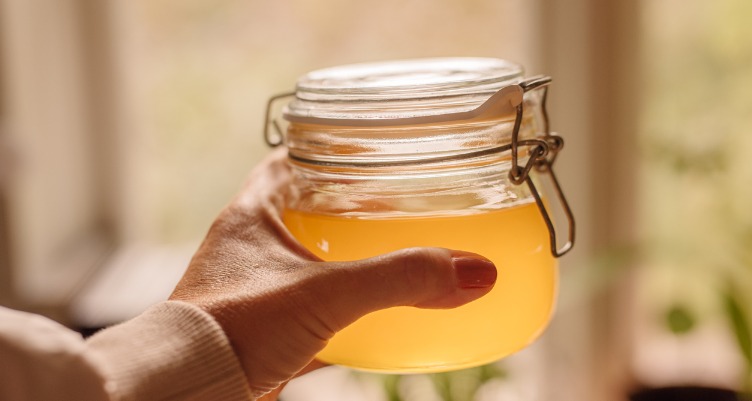
You don’t need to refrigerate ghee, which means you can stash it in your pantry and have it last longer than butter would last in your fridge. Lately, we’re all shopping for groceries a little bit differently, and butter may or may not be on store shelves — let alone high-quality, grass-fed varieties. But keeping a jar of Grass-Fed Ghee in your pantry means you’ll always have access to a delicious, versatile cooking fat.
Related: What’s the Difference Between Ghee vs. Butter?
3. Tastes amazing

Ghee has a subtle, rich flavor thanks to the way it’s cooked. The caramelized milk solids give the butterfat slightly nutty, aromatic notes that taste and smell like butter’s cooler cousin.
Don’t worry — ghee won’t overwhelm the flavor of your dish. Instead, it adds a delicious level of depth to your favorite foods, whether you’re cooking, baking or blending up a mug of Bulletproof Coffee.
4. Nutrient-dense
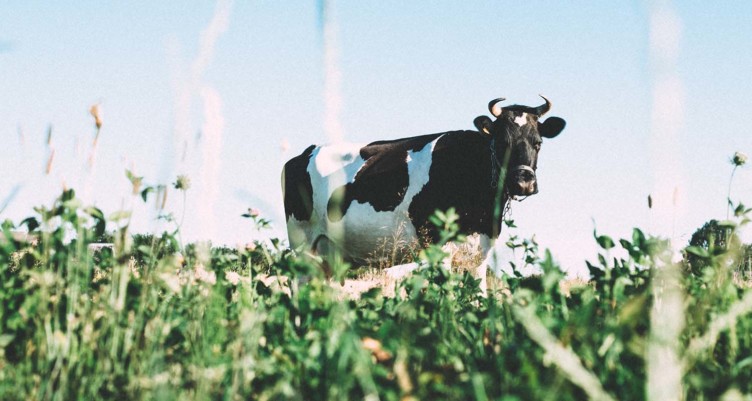
When it comes to anything dairy, you’ve probably read that choosing products from grass-fed cows makes a huge difference to your health and the health of the planet. In comparison to butter from grain-fed cows, grass-fed butter (and, by extension, grass-fed ghee) has a better omega-3 fatty acid ratio and higher levels of beneficial nutrients like CLA. For more details, check out the health benefits of grass-fed butter.
5. Versatile

Think of any time you’ve reached for butter or cooking oil in the kitchen. You can use ghee in pretty much any of those situations with delicious results. Cook with it, bake with it and (because of its high smoke point) even sear a steak with it!
You can also use ghee in place of not-so-healthful oils like canola oil and other vegetable oils. Learn the story behind healthy fats for high-heat cooking.
Ghee and clarified butter: What’s the difference?
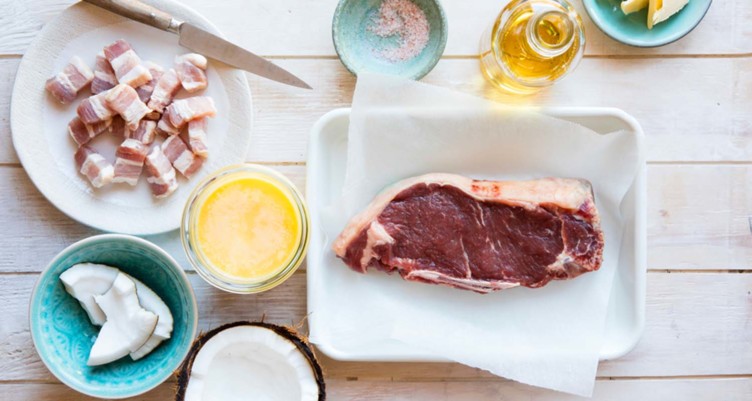
Both start with butter and heat. As the butter melts, eventually about one-quarter of the volume will separate as milk solids, and the remaining three-quarters is left as butterfat. This golden butterfat is referred to as clarified butter. Based on this definition, ghee IS clarified butter — but it takes a bit more effort to turn it into ghee.
When you heat clarified butter a bit longer, the water evaporates, and the milk solids caramelize. The remaining butterfat takes on a richer flavor. These additional steps turn clarified butter into ghee.
You know how all squares qualify as rectangles, but not all rectangles are squares? This is why ghee is sometimes called clarified butter, but not all clarified butter can be called ghee.
What can I make with ghee?
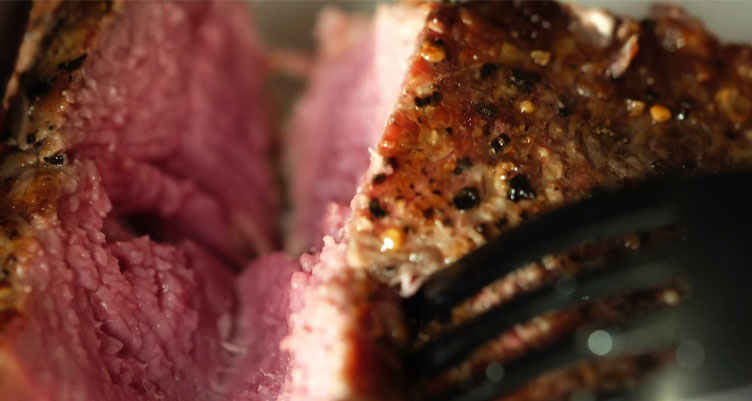
Ghee adds deliciousness to any recipe that requires butter, but can add more crispness to browned edges and won’t burn as quickly as other fats. Get Bulletproof Grass-Fed Ghee and try these delicious ghee recipes:
- Easy Seared Steak With Ghee: Maximum flavor with minimal effort. The high smoke point of ghee allows you to get a great sear and maintain the delicious flavor.
- Roasted Butternut Squash Soup: This recipe starts with ghee-roasted squash for the most delicious, caramelized squash flavor.
- Orange Dill Compound Butter: Infused with orange zest and dill, this ghee will bring out the flavor of any roasted meat.
- Fluffy Keto Almond Flour Biscuits: Ghee gives these biscuits a richness and a subtle, nutty flavor to dip into soups or serve as a hearty dinner roll.
- Paleo Keto Shortbread Cookies: Grass-fed ghee is the secret to the most flavorful shortbread cookies with a delectable crispness.
- Chocolate Keto Lava Cake: Almond flour and ghee are the perfect combination for this delicious chocolate keto dessert.
Sign up for early access to sales, product launches, the latest Bulletproof news and more!



